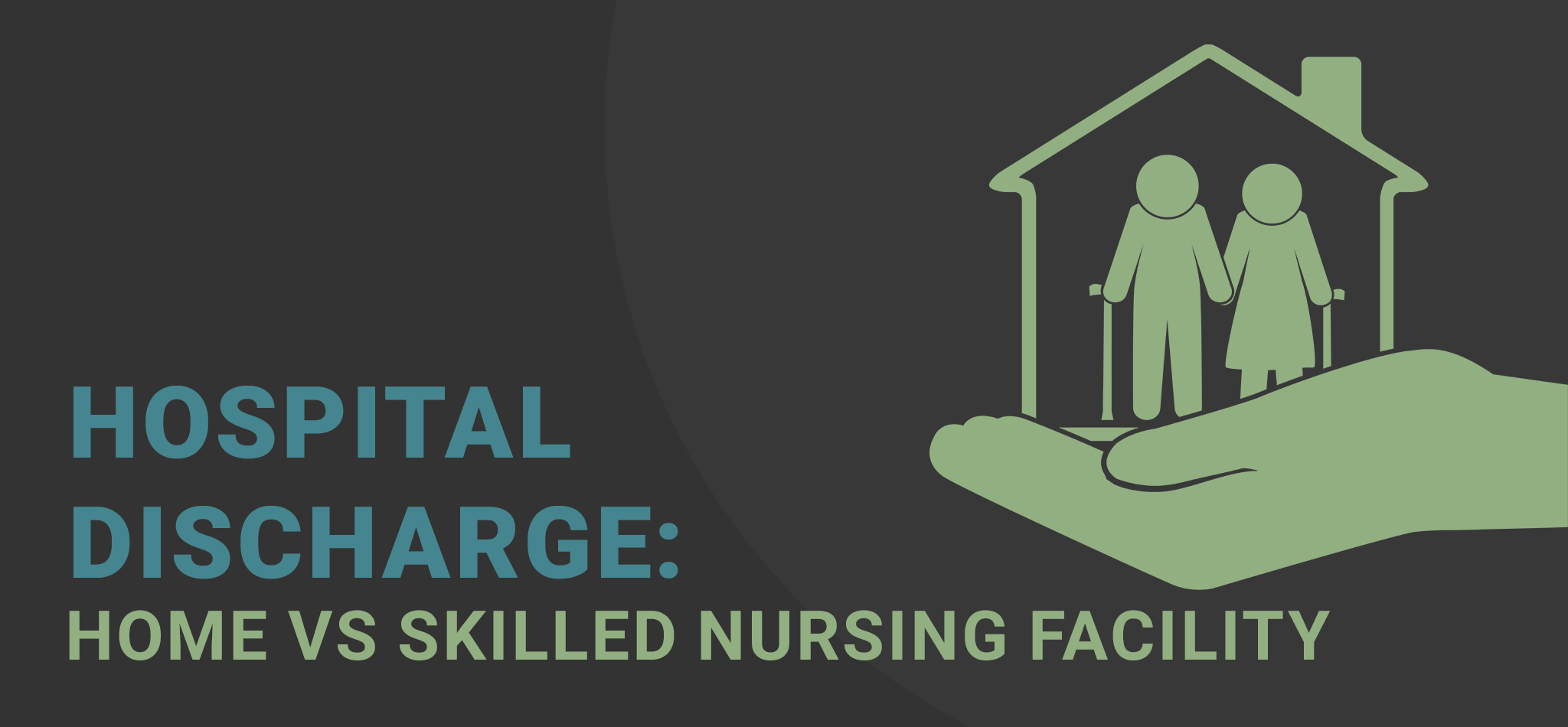Hospital Discharge to Home Versus a Skilled Nursing Facility

Since the introduction of the prospective payment system (PPS), hospitals have had a financial incentive to discharge patients quickly because Medicare, for the most part, pays a fixed rate for hospitalizations without regard to the length of stay. Many discharge planners view their roles as cost control. When the discharge is not to a skilled nursing home (SNF), follow-up for unresolved medical problems is critical. Post-hospital acuity levels have increased, resulting in more complex arrangements and increased teaching needs for patients and family caregivers.
To facilitate an appropriate discharge from the hospital, The Center for Medicare and Medicaid Services has the following regulation in effect:
• 42 CFR § 482.43 – Condition of participation: Discharge planning. The hospital must have an effective discharge planning process that focuses on the patient’s goals and treatment preferences and includes the patient and his or her caregivers/support person(s) as active partners in the discharge planning for post-discharge care. The discharge planning process and the discharge plan must be consistent with the patient’s goals for care and his or her treatment preferences, ensure an effective transition of the patient from hospital to post-discharge care, and reduce the factors leading to preventable hospital readmissions.
A study investigating the association of patient outcomes and Medicare costs of discharge home with home health care vs. discharge to a skilled nursing facility was conducted using more than 17 million hospitalizations from January 1, 2010, through December 31, 2016. 38.8% were discharged home with home health, and 61.2% were discharged to a skilled nursing facility (SNF). The patients discharged home experienced a 5.6 % higher readmission rate at 30 days than those discharged to the SNF. However, there were no significant differences in 30-day mortality rates or improved functional status. Medicare payments for those discharged home for post-acute care were significantly lower than those discharged to an SNF.
Skilled nursing facilities consistently received a higher share of hospital discharges compared to home healthcare agencies towards the last quarter of 2021 and the beginning of the first quarter of 2022, a shift from the home health trend in the early days of the pandemic. However, signs suggest home health referrals are much higher overall than before the pandemic. Even if demand for home health services is increasing, the demand for agencies’ bottom lines is based on staffing capacity. In January 2022, the home care industry’s referral rejection rate had reached 58%, according to Tom Martin, director of post-acute care analytics at WellSky. “This is telling us that [providers] can’t take this high volume of patients looking for home health services, and they’re starting to turn down more and more patients from their referral partners.
While increasing disease burden and rising healthcare costs in the United States have already contributed to a boost in care at home services, the COVID-19 pandemic has created a catalyst to reimagine their future. It is estimated that up to $265 billion worth of care services (representing up to 25 percent of the total cost of care) for Medicare FFS (fee for service) and MA (Medicare Advantage) beneficiaries could shift from traditional facilities to the home by 2025 without a reduction in quality or access. Factors that have created the opportunity for more care at home, including the growth in virtual care, remote monitoring, telehealth, social support, and home modifications, may enable more patients to receive some level of care at home.
Factors that could affect the adoptions of the growth of home care services are dependent on the following:
• Evaluating the services that can be delivered at home
• Economic viability for the healthcare facilities and physician groups
• Physician awareness, perceptions, and capabilities
• How patients feel about homecare
The COVID-19 pandemic has created a catalyst to fundamentally reimagine care at home to help improve the quality of care and patient experience while also creating potential value for payers, healthcare facilities and physician groups, home care providers, technology companies, and investors.
Patient care in their homes provides comfort for the patient and a reduced cost for Medicare; however, it needs to be appropriate and not be at the expense of preventable adverse health events. MLAP understands the risk intricacies in post-hospital discharge needs and the appropriateness of the discharge. Let us share our expertise with you to gain further insight into the standard of care in this process.